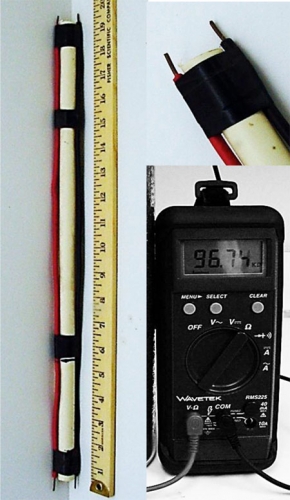Measuring soil water movement is a simple matter of resistance
Irrigators often wonder when to turn irrigation systems off. This can easily be determined with a piece of PVC pipe, two wires, tape, an inexpensive ohm meter and a little understanding of soil physics.
How long to run an irrigation system for maximum efficiency has been a question for many irrigators. Irrigating too long and moving water beyond the root zone simply wastes water, energy and any nutrients carried in the water. Over irrigating leads to nutrient leaching beyond the root zone potentially into ground water in high water table sites and may lead to over application of nutrients.
No matter the soil type, the question remains, “How long do I run my system to make sure my plants receive adequate water?” Most roots of annual crops are in the top 18-inches of soil, even less for shallow rooted crops like onions, lettuce, radish, etc. So to irrigate long enough to water beyond this depth is a waste. A simple measuring tool can be made from ½” PVC, No. 10 insulated wire, tape and an ohm meter (Figure 1). This works off the principle that dry soil has greater resistance then wet soil.

Figure 1. Soil probe made of 1/2" PVC, No. 10
insulated wire (left). Bared wire ends (top right).
Ohm meter (bottom right).
To make the soil probe, cut a piece of PVC a couple inches longer than the depth to be measured. Cut two pieces of wire one-inch longer than the PVC, bare the ends and tape them to opposite sides of the PVC pipe (Figure 1). Make a pilot hole in the ground with a metal pipe or piece of re-bar and then insert the PVC tube. Attach an ohm meter to the bare wire leads and obtain an initial reading. Turn on the irrigation (If using overhead irrigation plug the PVC pipe so water doesn’t go down the inside.) and then check the ohm meter reading periodically. When the water front reaches the other end of the wire, the numbers on the display will drop dramatically. When that happens there is no need to irrigate any longer since any additional water will only push water beyond the root zone.
Growers who have used this technique have reduced water use by 25 percent or more. This is a 25 percent savings in water, energy and pump wear – and we all could use a little savings these days.



 Print
Print Email
Email

